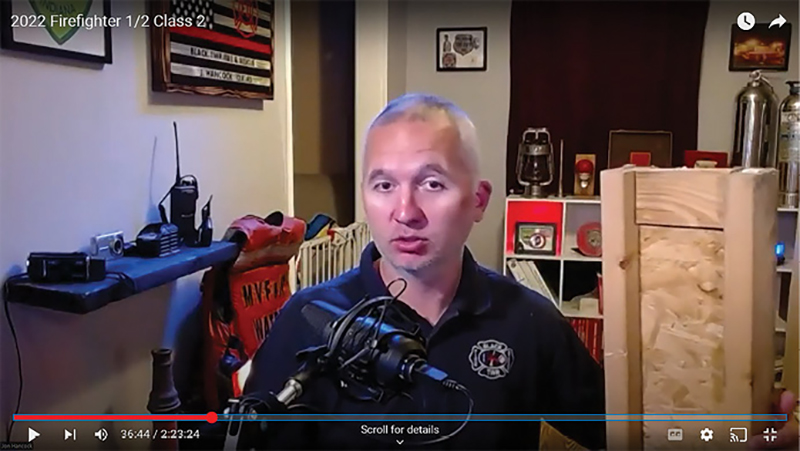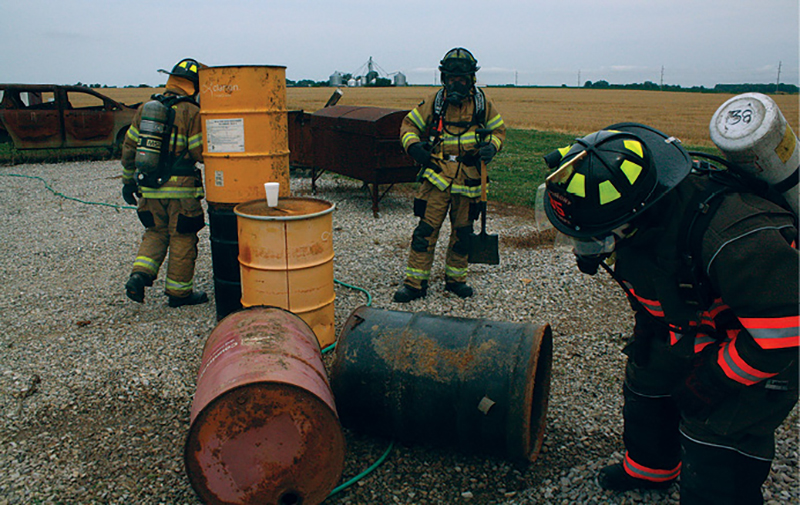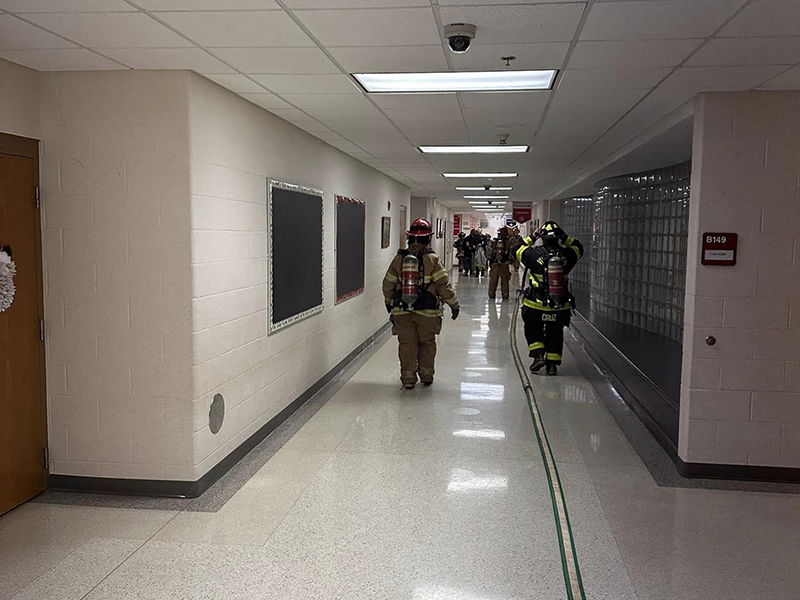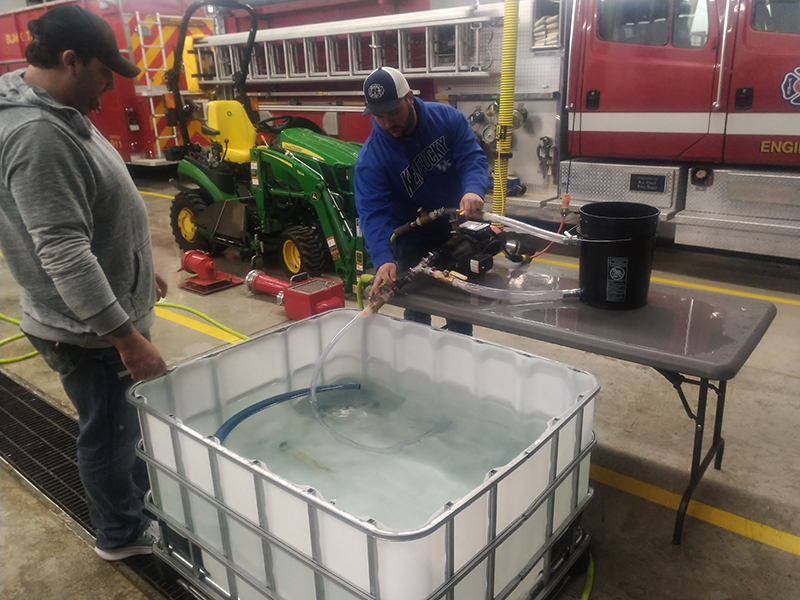VOLUNTEERS CORNER ❘ BY JONATHAN HANCOCK
As a dedicated firefighter serving Southwestern Indiana for more than 17 years, I have witnessed a transformative shift in the approach to firefighter certification academies. Reflecting on my personal journey, I vividly recall the obstacles I faced during my Firefighter 1 and 2 academies, in 2007. However, it was the accommodating nature of a compassionate lead instructor that enabled my success in obtaining the crucial certification necessary for a well-deserved pay raise in my job at that time.
Challenges in Traditional Firefighter Academies
Over the years, as I observed—and later participated in—various firefighter academies, it became evident that some lead instructors placed more emphasis on attendance policies than on meeting the unique needs of their students. Unfortunately, this approach resulted in alarming dropout rates, especially during a time when the declining number of volunteers posed a significant safety concern. The shortage of certified crews on firegrounds heightened the urgency to address this issue.

(1) The author lectures his online academy about building construction, from his studio. (Photos by author.)

(2) Students learn to assess a hazmat spill of unknown contents.
A Personal Decision to Make a Difference
When my department’s heavily active instructor decided to take a leave, I made a personal commitment to institute change and step up to fill that vacancy. After looking at the course catalog of classes available and realizing the lack of instructor programs in the state that aligned with my work and family responsibilities, I felt defeated about the possibility of achieving my goal.
It was not until I expanded my search for alternatives that I stumbled on a hybrid online instructor program. Despite my limited experience with online platforms like Zoom, I was new to this concept, and I joined the program in early 2019. The lead instructor of this program showed me many ways to gain the audience’s attention. Learning with technology and through his program, I gained a great friend and mentor who helped give me the drive to create my own program.
The Birth of a Hybrid Online Academy
After successfully completing the program and obtaining my certification, I saw the potential for a new approach to firefighter education. When the pandemic struck and traditional classroom settings became impossible, I seized the opportunity to break tradition and bring the academy to the students through Zoom as was being done in both K-12 institutions and at the university level. My co-lead instructor and I designed the first Firefighter 1 and 2 hybrid online academy in our area, spanning out to the 12 counties within our district.
Reaching the Forgotten Students
The pilot class, comprised of 40 students from six counties (with one firefighter who was outside of our district), yielded invaluable insights. It became apparent that our program appealed to those who had been overlooked or abandoned by previous instructors due to conflicting responsibilities, such as family obligations, work schedules, volunteer commitments, and military duties. The word about this unique program spread throughout the community, and the demand surged.

(3) Students learn to search a school with smoke conditions present.

(4) Students learn pump-drafting skills.

(5) Students perform a technical rescue of a down person at an industrial facility.
Lessons from Success
What set our academy apart? Three key factors played a vital role in its overwhelming success:
- Recorded Lecture Sessions. By recording each lecture, we provided students with the flexibility to catch up on missed material due to work or emergency calls. This feature empowered students to take ownership of their learning process.
- A Collaborative Teaching Approach. We fostered a partnership with students’ respective departments, encouraging them to actively participate in teaching state job performance requirements and agency standard operating procedures. This approach not only ensured consistency but also strengthened the bond between students and their departments. It also allows departments to log training hours to report to the state and for Insurance Services Office audits.
- A Flexible Testing Schedule. To accommodate varied work schedules, we staggered the testing dates across multiple sites within the 12 counties. This gave students the freedom to plan time-off requests in advance, thereby reducing scheduling conflicts.
Putting Students First: The Path to Success
As instructors, it is our responsibility to mentor and guide our students. Unfortunately, some instructors seem to forget what it’s like to be a student. When academy syllabi are designed around personal and work obligations of the lead instructor instead of the needs of the class, students are set up for failure, eroding their trust in instructors. By adopting a student-centered mindset and prioritizing students’ needs, successful programs can be created, where aspiring firefighters are willing to go to great lengths to secure a seat in the academy.
The fire service community in Southwestern Indiana has witnessed a transformative shift in firefighter certification academies. In the three years our program has operated, 118 firefighters have attended this program. Of those 118 firefighters enrolled, 30 students failed to finish the academy. By challenging traditional norms and embracing innovative approaches, we have successfully bridged the gap for those previously left behind. The hybrid online academy model, with its flexible and accessible nature, has proven to be a game changer. It is our duty as instructors to ensure that students’ needs are at the forefront, creating a thriving learning environment where all aspiring firefighters can realize their potential.
JONATHAN HANCOCK is a 20-year veteran firefighter. He is currently in his 17th year as a firefighter/instructor for the Black Township Fire and Rescue, in Mount Vernon (IN). He previously served three years with the Crossville (IL) Volunteer Fire Department. He has an associate’s degree in criminal justice with applied sciences from Southeastern Illinois College. His state certifications include Indiana licensed EMT-Basic and State Fire Instructor 1. He is the lead instructor of the District 10 Fire Academy and lead planner and organizer of Black Township’s open-invitation training events.

